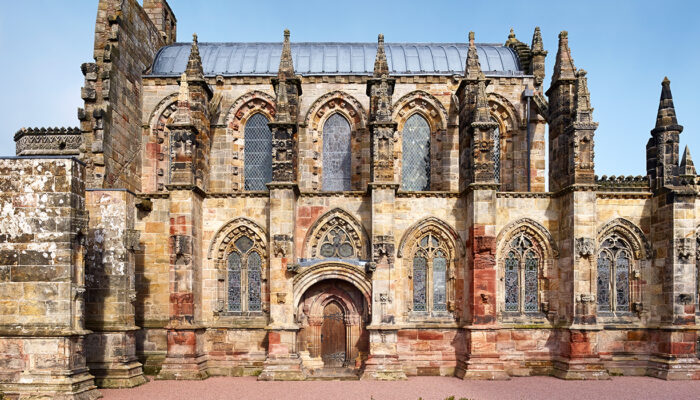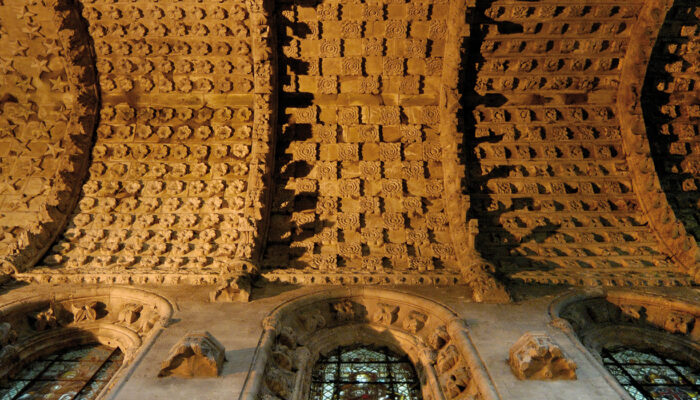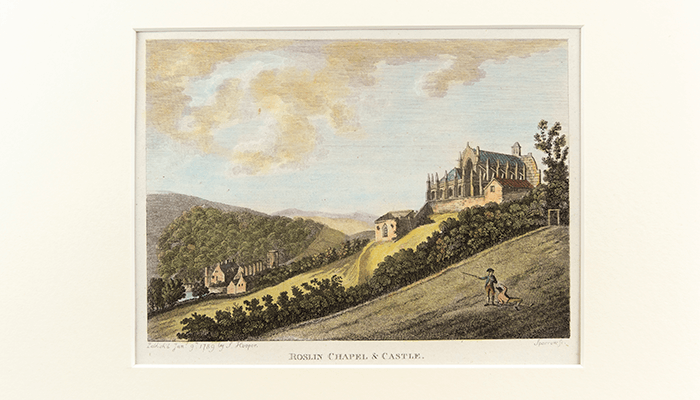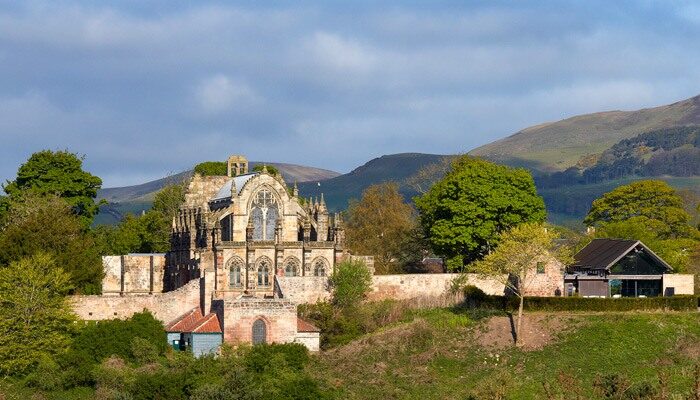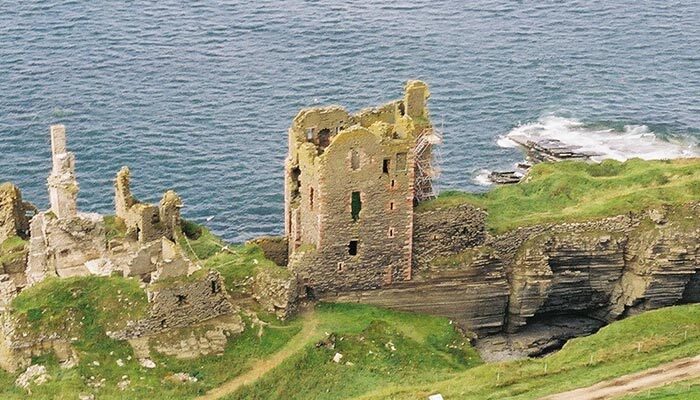
Sir Walter Scott and Rosslyn
Rosslyn Chapel first found fame thanks to Sir Walter Scott (15 August 1771 - 21 September 1832), one of Scotland's most famous sons, and prominent historical novelist, poet, playwright and historian.
In 1798, shortly after his marriage, Scott rented Lasswade Cottage, in Lasswade just a few miles from Roslin. This was to be his summer retreat, close to properties owned by his friends The Duke of Buccleuch and Henry Dundas of Melville.
The proximity of the house to Roslin may have fuelled his interest in the Chapel, which he describes while walking there -
'Yonder, Sir, you behold the far-famed Chapelle, founded in 1446, by the powerful William St Clair, which, whatever we modern critics think of it, was not finished without the aid of an architect who had travelled to Rome, and throughout all Europe, to learn the deeper mysteries of his vocation and give the proper embellishments to its interior. It is one of the few remnants of antiquity on which our great champion of the Scottish church did not exercise his peculiar plans of reformation. There you shall shortly tread on the pavement under which twenty of the bold Barons of Roslin are laid in their armour.'
(Recollections of Sir Walter Scott, R.P. Gillies)
In 1803, Dorothy Wordsworth records a meeting in Lasswade with Scott -
Saturday September 17th,
The morning very fine. We rose early and walked through the glen of Roslin, past Hawthornden, and considerably further, to the house of Mr Walter Scott at Lasswade. Arrived at Lasswade before Mr and Mrs Scott had risen and waited some time in a large sitting room. Breakfasted with them, and stayed till two o'clock, and Mr Scott accompanied us back almost to Roslin.
(A Tour in Scotland in 1803, Dorothy Wordsworth)
In 1805, Scott's epic work The Lay of the Last Minstrel was published. The poem tells of a 16th-century Border feud and the story is told over 150 years later by an aging minstrel who receives hospitality at Newark Castle from The Duchess of Buccleuch. The work's sixth canto includes references to the St Clair family, Rosslyn Chapel and Castle and to another of the family's properties, Ravenscraig Castle, in Fife.
The initial print-run was 750 but it was an immediate publishing success, bringing Scott widespread recognition. There were six editions within three years, with sales rising to 27,000 copies within ten years. The poem's fans included even the Prime Minister, William Pitt, who recited passages from the poem at his dinner table.
The work brought fame - and an influx of visitors - to Rosslyn Chapel.
Scott's interest in Rosslyn Chapel did not finish there but even extended to his Borders home, Abbotsford, which he bought in 1811. Copies of some of the Chapel's carvings were made and can still be seen in Abbotsford today.
A further link to Scott comes from George Meikle Kemp, the architect of the famous Scott Monument in Edinburgh. In 1807, when Kemp was aged 12, his father settled at Moorfoot, southeast of Penicuik. He was sent on an errand by his father's employer and, while carrying it out, visited Rosslyn Chapel. The building's Gothic architecture had a profound impact on Kemp and influenced his subsequent work as an architect and builder, including the design of The Scott Monument itself.
As an historian, Scott would have been fascinated by the rich history of the Chapel, Castle and St Clair family but their myths and legends must also have appealed to him as a storyteller -
A chronicle of Roslin, or any other old castle of consideration, that is to say, a minute record of the lives of its various inhabitants, how they fought and caroused, loved and hated, worked and played, would be worth more than all the mere romances that ever were penned, as a fund of amusement and instruction. But we have only vague outlines; imagination must do the rest.
(Recollections of Sir Walter Scott, R.P. Gillies)
The Lay of the Last Minstrel
Canto six -
O listen, listen, ladies gay!
No haughty feat of arms I tell;
Soft is the note, and sad the lay,
That mourns the lovely Rosabelle.
--"Moor, moor the barge, ye gallant crew!
And gentle ladye, deign to stay!
Rest thee in Castle Ravensheuch,
Nor tempt the stormy firth to-day.
"The blackening wave is edg'd with white:
To inch and rock the sea-mews fly;
The fishers have heard the Water-Sprite,
Whose screams forebode that wreck is nigh.
"Last night the gifted Seer did view
A wet shroud swathed round ladye gay;
Then stay thee, Fair, in Ravensheuch:
Why cross the gloomy firth today?"
" 'Tis not because Lord Lindesay's heir
To-night at Roslin leads the ball,
But that my ladye-mother there
Sits lonely in her castle-hall.
" 'Tis not because the ring they ride,
And Lindesay at the ring rides well,
But that my sire the wine will chide,
If 'tis not fill'd by Rosabelle."
O'er Roslin all that dreary night
A wondrous blaze was seen to gleam;
'Twas broader than the watch-fire's light,
And redder than the bright moonbeam.
It glar'd on Roslin's castled rock,
It ruddied all the copse wood glen;
'Twas seen from Dryden's groves of oak
And seen from cavern'd Hawthorn-den.
Seem'd all on fire that chapel proud,
Where Roslin's chiefs uncoffin'd lie,
Each Baron, for a sable shroud,
Sheath'd in his iron panoply.
Seem'd all on fire within, around,
Deep sacristy and altar s pale;
Shone every plllar foliage bound,
And glimmer'd all the dead men's mail.
Blaz'd battlement and pinnet high,
Blaz'd every rose-carved buttress fair--
So still they blaze when fate is nigh
The lordly line of high St. Clair.
There are twenty of Roslin's barons bold
Lie buried within that proud chapelle;
Each one the holy vault doth hold--
But the sea holds lovely Rosabelle!
And each St. Clair was buried there,
With candle, with book, and with knell;
But the sea-caves rung, and the wild winds sung
The dirge of lovely Rosabelle.
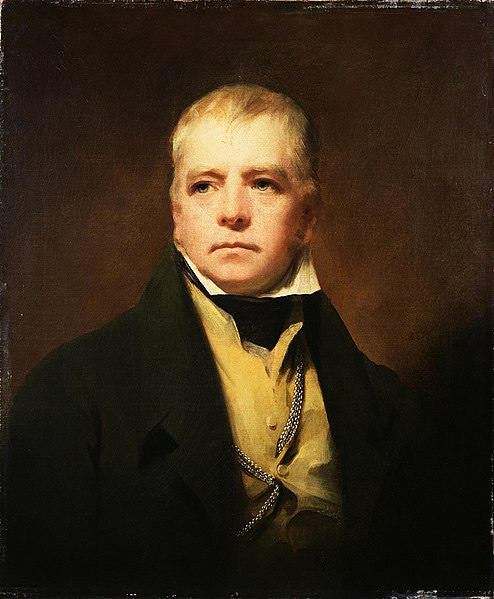
Sir Walter Scott
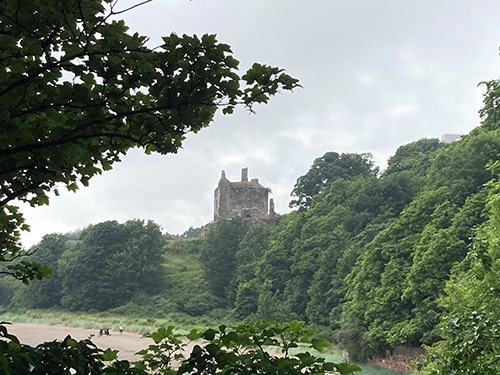
Ravenscraig Castle

